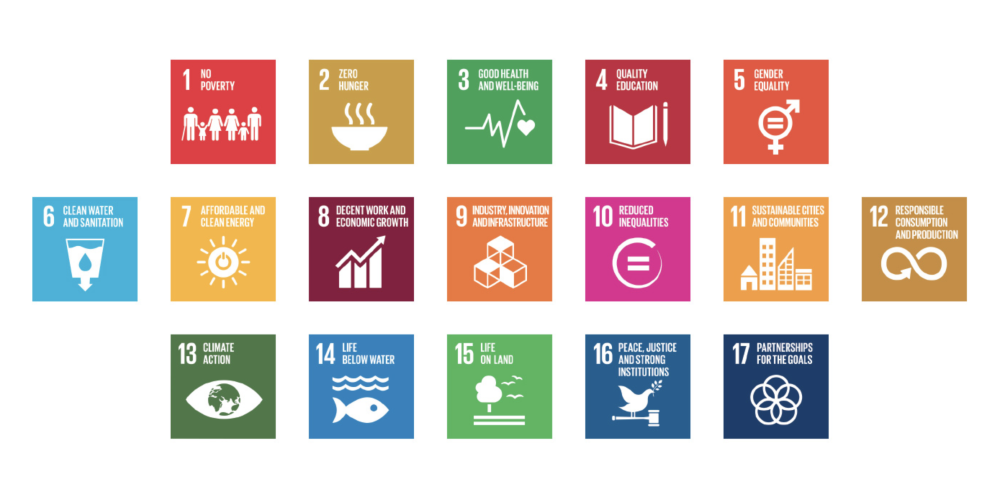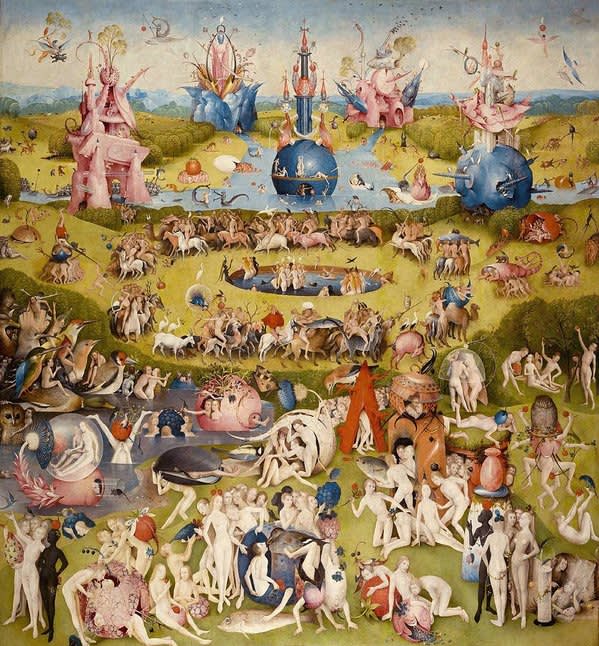
Hieronymus Bosch
The Garden of Earthly Delights, Central Panel, 1503–1515
In a world of human-facilitated melting ice caps, increasingly frequent natural disasters, and threatened wildlife, the global shift to sustainability is more important now than ever. While some industries have been on the forefront of prioritizing this ever-looming cataclysm, others stubbornly cling to a past filled with fossil fuels and waste. In celebrating those brands that have made a commitment to sustainable design and production, Minnie Muse hopes to bring attention to the changes that must be made and the innovative ways that creators, past and present, have, and continue to, implement change on a global scale.
The fashion world, ever celebrated for its constant reinvention, happens to be one of the most wasteful global industries with a staggering amount of carbon emissions, water usage, and product waste. More and more brands are looking to sustainable fashion to combat these harmful effects. In such a complicated industry, sustainability means addressing each part of the industry to find environmentally safe initiatives within the interdependent social, cultural, and financial systems. Some of these initiatives include “slow fashion,” an alternative to fast fashion, upcycling, transparency, and circularity. A few key brands have been on the forefront of this fight for decades. Transparency is one of the most crucial aspects of sustainable fashion. This means that a company—and its buyers—are aware of the environmental impact of each step in its production process, from the water used for farming cotton to the conditions of those sewing stitches right down to the carbon emitted from transporting the goods to stores. Because the fashion industry is so compartmentalized, often allocating various steps to an array of different countries, it is crucial that both the industry and its consumers are aware of the environmental impact of each garment. Brands like Patagonia and Stella McCartney are leaders in the initiative for transparency in fashion.
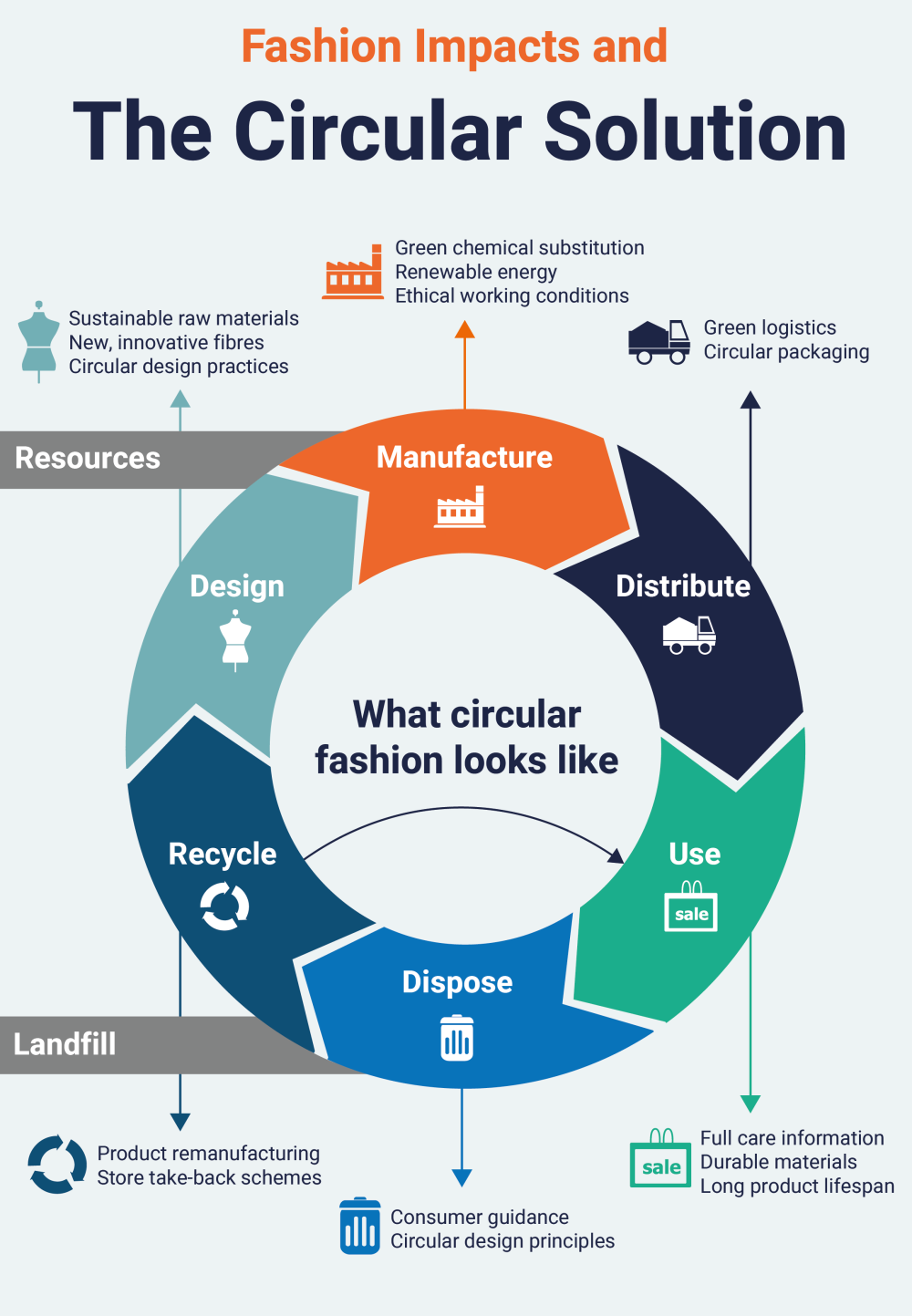
Anthesis
Fashion Impacts and The Circular Solution

Anthesis
Fashion Impacts and The Circular Solution

Seven forms of Sustainable Fashion
Yvon Choinard, an American rock climber, deeply understood the impact that the production and consumption of material goods had on the planet. When Choinard founded Patagonia in 1973, he made sure the company focused on creating long-lasting products with as little waste as possible. Today, that means a focus on growing synthetic, plant-made fibers rather than fossil fuels, as well as designing products that are built to last and that can be easily repaired, eliminating the wasteful consumption that fast fashion has spearheaded. It also means a focus on social responsibility, eliminating the harmful and dangerous conditions that cheap labor cause for those producing the products. Patagonia commits to transparency by publicly listing every part of its supply chain, including farms, mills and factories.
Tom Frost
Portrait of Yvon Chouinard, 1960s
Patagonia
Common Thread, Campaign
Patagonia
The Footprint Chronicles, Product Transparency Breakdown
Doug Tompkins, another outdoorsmen-turned-entrepreneur, founded the brand ESPIRIT in the 1960s, following the decade’s cultural shifts toward respecting the planet and its natural resources. Focusing on the impact of materials, ESPIRIT dedicated itself to finding alternatives to cotton. Today, ESPIRIT takes a circular approach to implementing sustainability, which focuses on creating a system which implements both sustainable production and a sustainable economy to support it. This means smarter designs, responsible and transparent production, and the reuse and recycling of materials in every part of the supply chain. ESPIRIT and Patagonia have long been regarded as frontrunners in the fight for sustainable fashion, and their initiatives are model examples of the approach fashion brands need to take today. One of the most dedicated names in high fashion, Stella McCartney began her initiative for sustainable fashion with the launch of her eponymous brand in 2001. Committed to pushing fashion toward a sustainable future, McCartney focuses her brand on three core themes: material innovation, social sustainability, and transparency. This means sustainably sourced fiber, including the brand’s famous vegetarian leather which eliminates the land use and greenhouse gas emissions caused by cow leather. It also means a fair wage and safe working conditions for all members of the supply chain, from farmers to employees. Finally, the brand uses the Environmental Profit and Loss tool to measure the impact of every aspect of the business from farm to store.
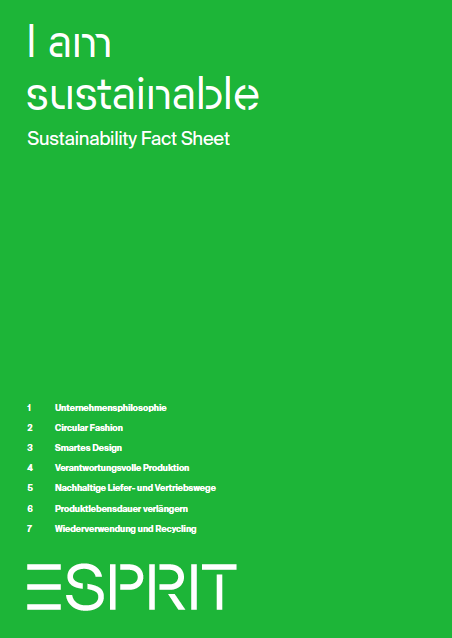
Esprit
I am sustainable, Fact Sheet

Espirit
Advertisement, 1980s
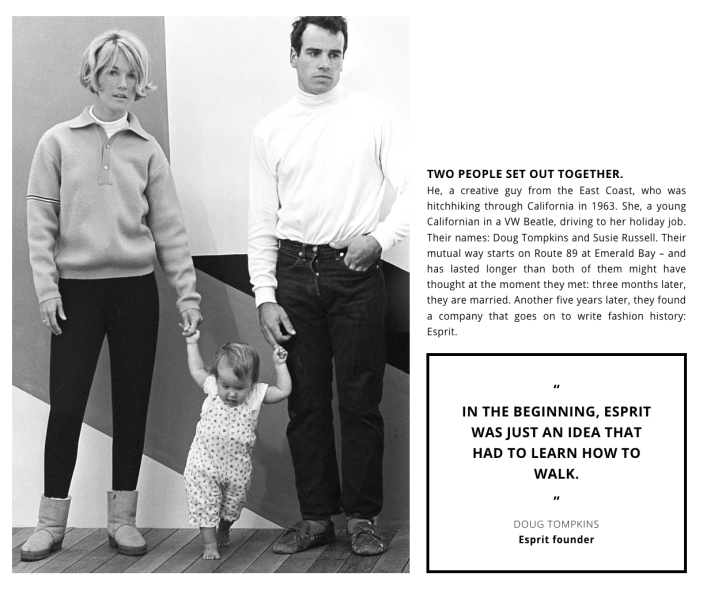
Espirit
Susie and Doug Tompkins, 1968

Stella McCartney
Sustainable Viscose Campaign, 2016
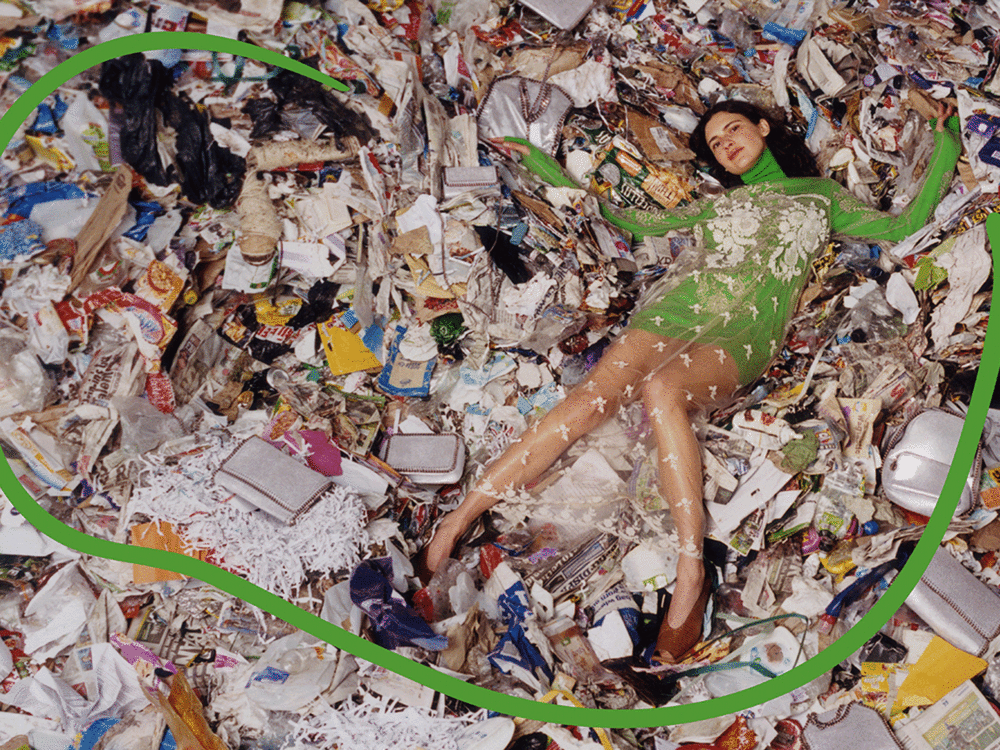
Stella McCartney and Urs Fischer
Sustainability Campaign, Fall/Winter 2017

Stella McCartney
Sustainability Campaign, 2018
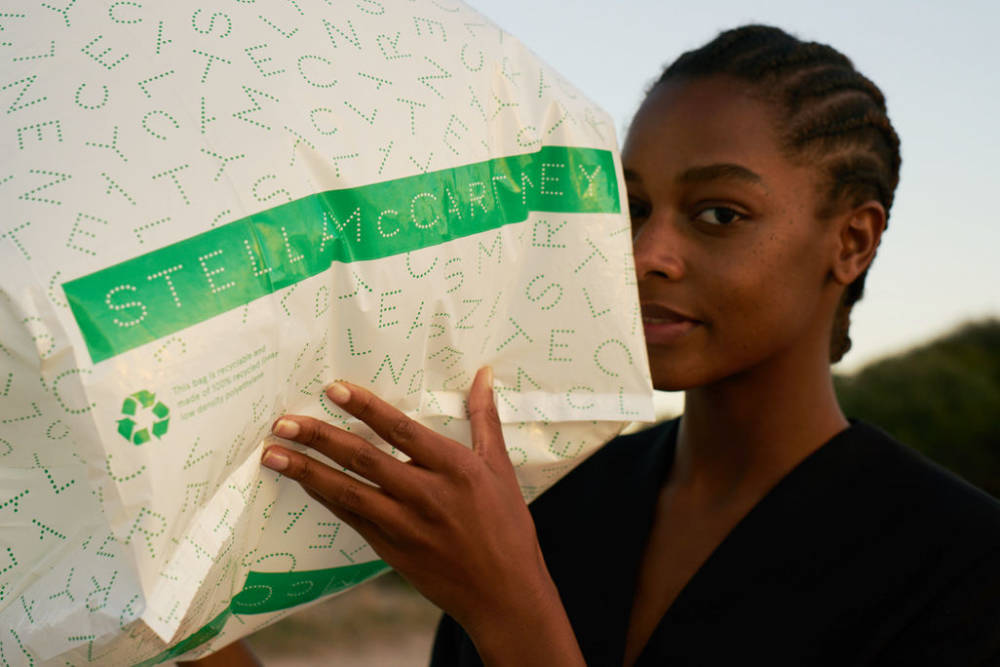
Stella McCartney
Trash Bag Campaign for World Ocean Day, Spring/Summer 2018
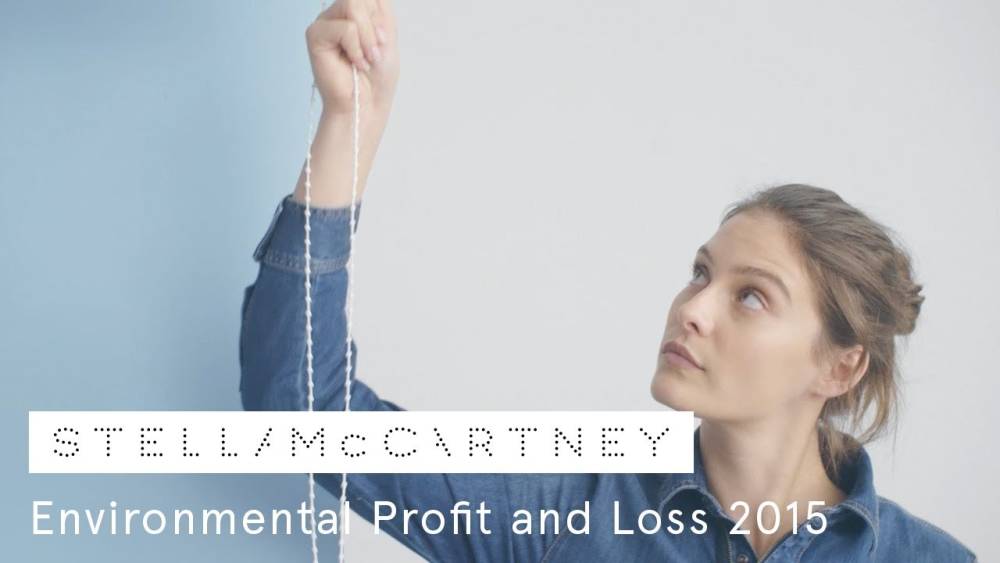
Stella McCartney
Environmental Profit and Loss, 2015
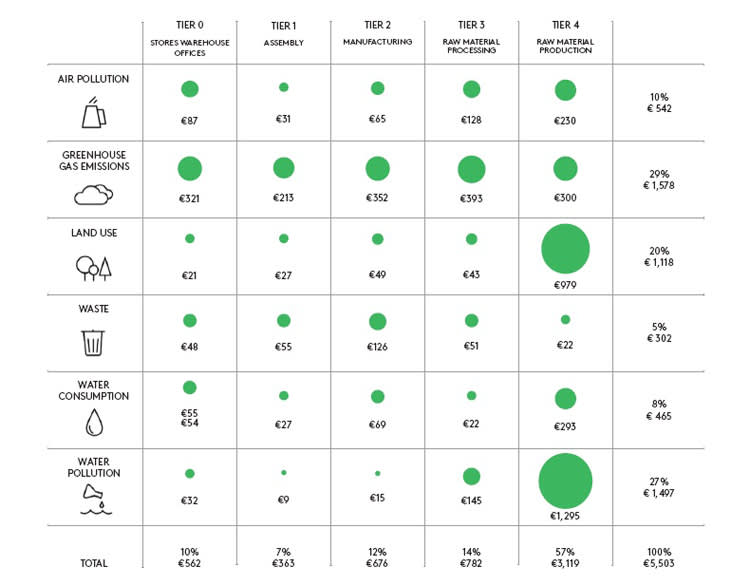
Stella McCartney
EP&L Infographic
While not every fashion brand includes sustainability as a core part of its DNA, many brands have been “cleaning up” in recent years due to the urgent nature of climate change. Nike, who was confronted with numerous scandals in the 1990s due to unfair labor practices, has begun putting a larger focus on its environmental and social performance since 2001, thanks largely to their first chief sustainability officer Hannah Jones, and current sustainability office Noel Kinder. As a sportswear brand, Nike has begun recognizing the impact that climate change has on its brand and its customers, including a loss of playing field for snow sports and a decrease in field time for sports in dangerously hot areas due to carbon emissions. Nike’s Move to Zero initiative aims to protect the future of sports by moving towards zero carbon and zero waste. Among Move to Zero’s goals are converting its facilities to 100% renewable energy by 2025 and reducing its supply chain’s carbon emissions by 30% by the year 2030. Nike’s Reuse-a-Shoe program aims to convert product waste into playgrounds, tracks, and sports courts.
Nike
ReUSE a Shoe Campaign
Nike
ZoomX VistaGrind, made from recycled materials, 2019
Taking a hint from ESPIRIT, Nike’s initiative also includes turning to circularity, which the brand defines as “creating products that last longer and are designed with the end in mind.” One such example of this type of smart design is Nike’s Space Hippie shoe, its lowest carbon footprint shoe. The design process looked to treat waste as valuable material, using innovativeness as a source of inspiration. The shoes were designed with an eye for environmental impact in every stage of the process from materials to packaging. Like Patagonia, many designer brands are focusing their environmental efforts toward sustainable material. Prada’s Re-Nylon initiative partners with textile producer Aquafil to create nylon material from recycled plastic waste and textiles. Brands such as Gucci and Louis Vuitton have begun implementing responsible sourcing of materials and reducing waste into their company missions. Following in Stella McCartney’s footsteps, Gucci announced in 2017 that it would no longer use fur in its collections. Chanel’s “Mission 1.5°” pledges to switch to 100% renewable electricity by 2025, and to reduce emissions by 50% by 2030.

Prada
Re-Nylon, Campaign
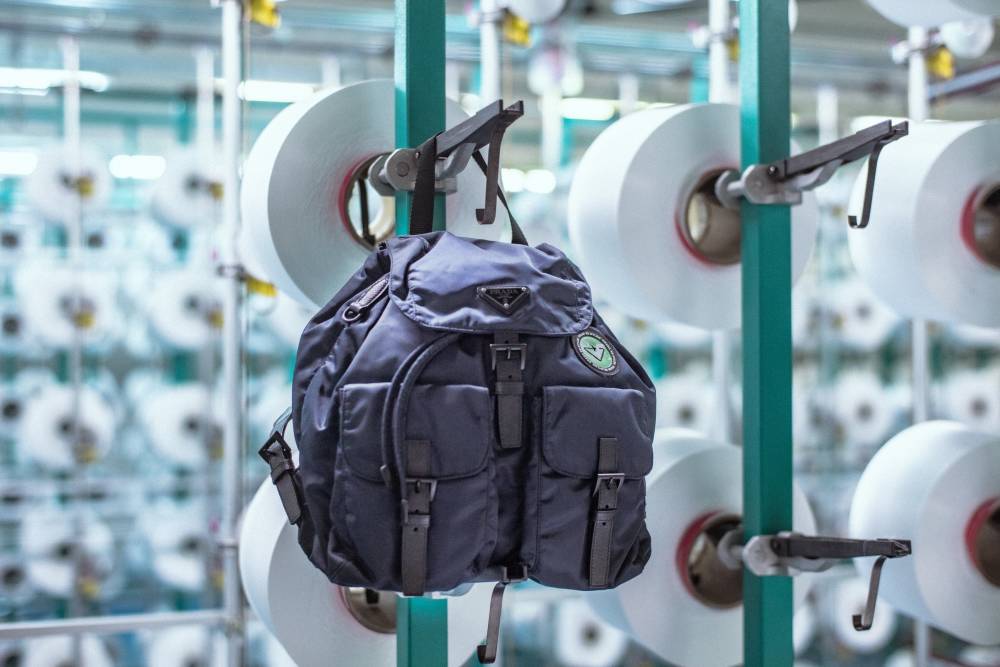
Prada
Re-Nylon, Backpack

Prada
Re-Nylon, Backpack

Gucci
Equilibrium, Spring/Summer 2018
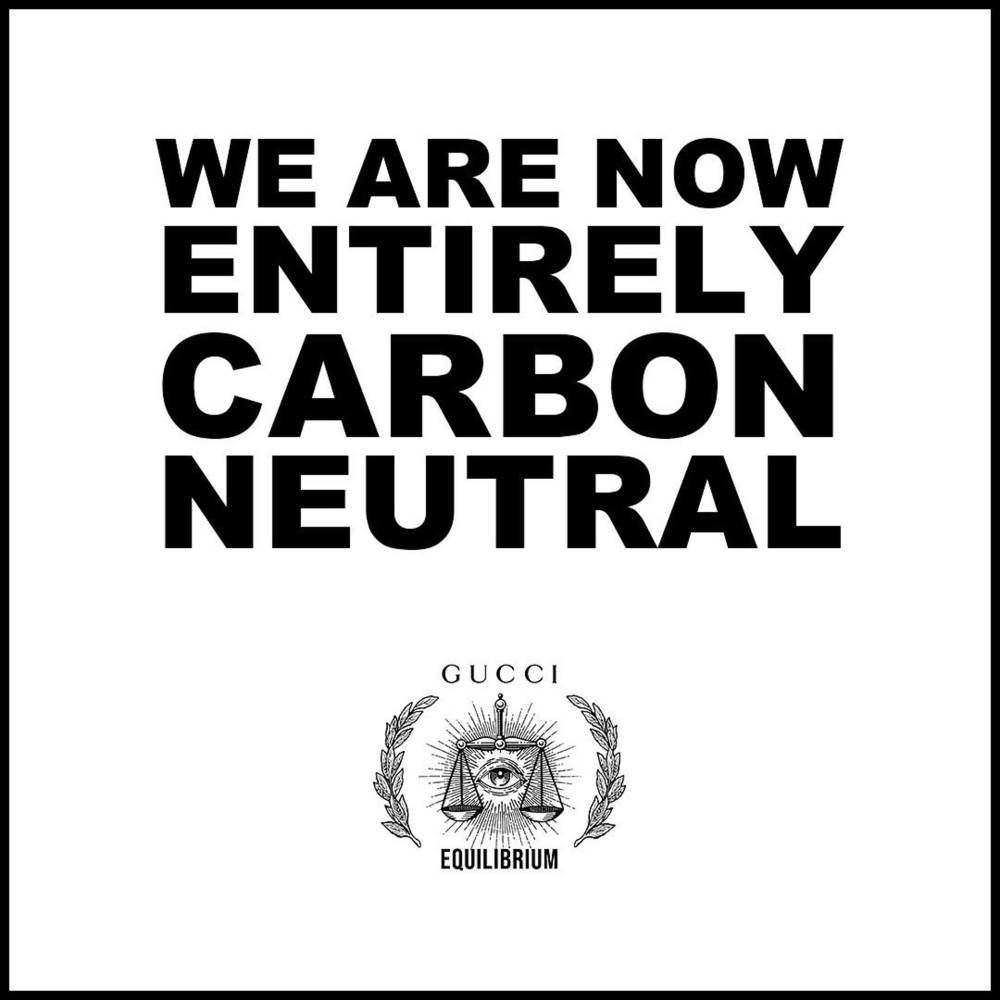
Gucci
Equilibrium, Spring/Summer 2018
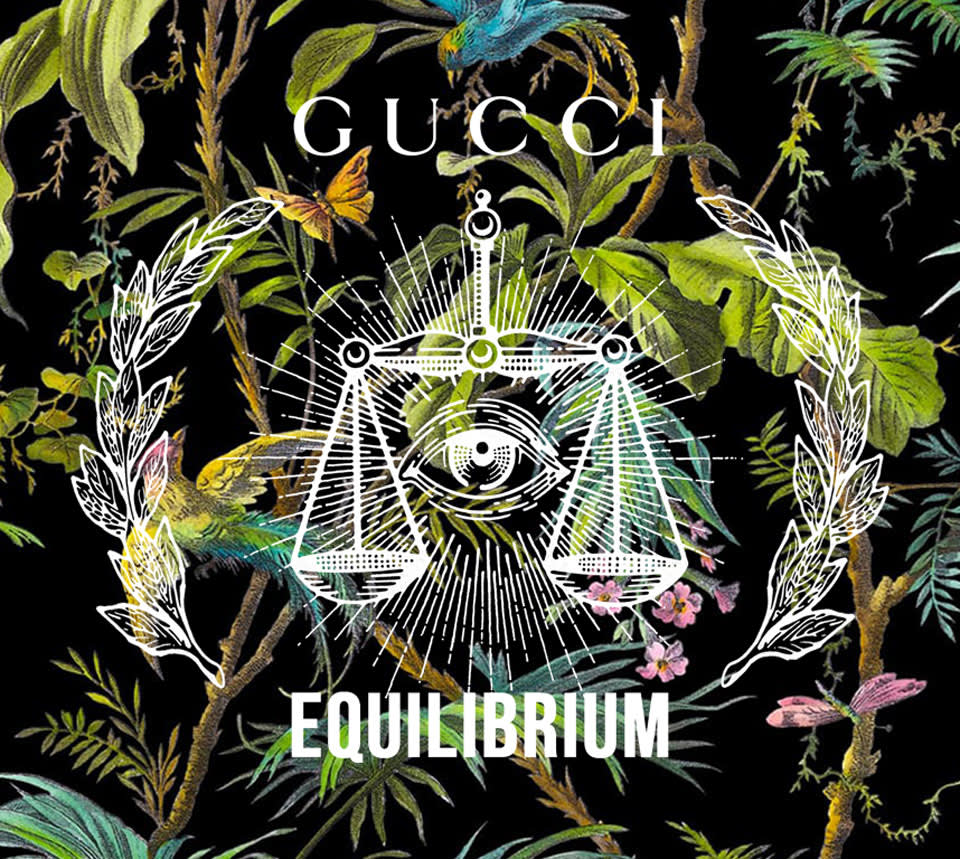
Gucci
Equilibrium, Campaign

LVMH
Environmental Focus, Infographic

Chanel
Mission 1.5°, Campaign
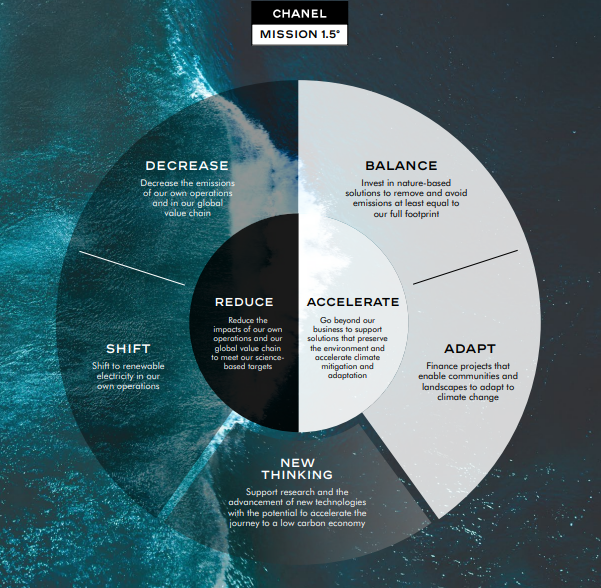
Chanel
Mission 1.5°, Infographic
Still, more and more brands seek to utilize “upcycling,” the process of creatively reusing materials to create a new, innovative, and desirable product. One key frontrunner in this initiative is Maison Martin Margiela, whose use of repurposed old clothing has been a core tenant of the brand’s design and production choices since the 1980s. In the art world, upcycling has become almost synonymous with modern art. Many famous and successful artists have built a career on rejecting the oil paint and marble of traditional art and turning instead to found object and materials. This was not always the case, however. “Arte Povera”—the Italian art movement founded in the 1960s and 70s—was a major influence in exploring the use of waste as material and the way in which this process subverts the contemporary art market. Italian sculpture artist Giuseppe Penone, famous for his large-scale tree sculptures, gained notoriety through his use of wood from fallen trees. Michelangelo Pistoletto’s work, including the famous Venus of the Rags sculpture, uses cloth and fabric waste combined with a Classical sculpture of the Roman goddess Venus to drive home the message of Arte Povera about upcycling and the values of the art market. Marcel Duchamp, a pioneer of the Dada movement, almost always uses found objects as his main medium. Duchamp’s “Readymades” took mass-produced objects such as urinals and bicycle wheels and displayed them as art, shifting the idea of artist as craftsman to artist as conceptual thinker. Artists such as these apply sustainability to their works while also conveying a deeper message about art itself.
Maison Martin Margiela
Artisanal, Playing Card Vest, Spring/Summer 2006
Maison Martin Margiela
Label Vest, Spring/Summer 2001
Maison Martin Margiela
Label Vest, Spring/Summer 2001
Maison Martin Margiela
Label Shirt, Spring/Summer 2001
Maison Martin Margiela
Label Shirt, Spring/Summer 2001
Giuseppe Penone
The Hidden Life Within, 2011
Michaelangelo Pistoletto
Venus of the Rags, 1967-74
Marcel Duchamp
Bicycle Wheel, 1913–64
Marcel Duchamp
Bottle Rack, 1914
Many other artists have used found materials throughout their careers. One of the most notable examples is Pablo Picasso’s Bulls Head sculpture made from bicycle parts. Avant-garde artist and avid collector Joseph Cornell’s boxes, including “Fortune-Telling Parrot,” celebrate discarded objects as memorabilia. Sarah Lucas, Tracey Emin, and Robert Rauschenberg all utilize this way of thinking and the inclusion of found objects in their art. Artist Pia Camil goes another step, recycling the old material she finds into new works of art as a way to confront consumerism and the globalization of production. Her interactive exhibits utilize recycled t-shirts and denim as lounging space for viewers. Some artists have taken this innovative thinking even further. Jean-Michael Basquiat not only uses found materials in his art; he also uses them as his canvas. His early painting “Pork,” presented on a door, speaks to the way artists are expected to be able to afford specific “acceptable” materials—like canvas—in order to be considered elite. Basquiat’s notoriety proved that art does not have to be founded on a basis of expensive materials and can instead come from anything and anyone.
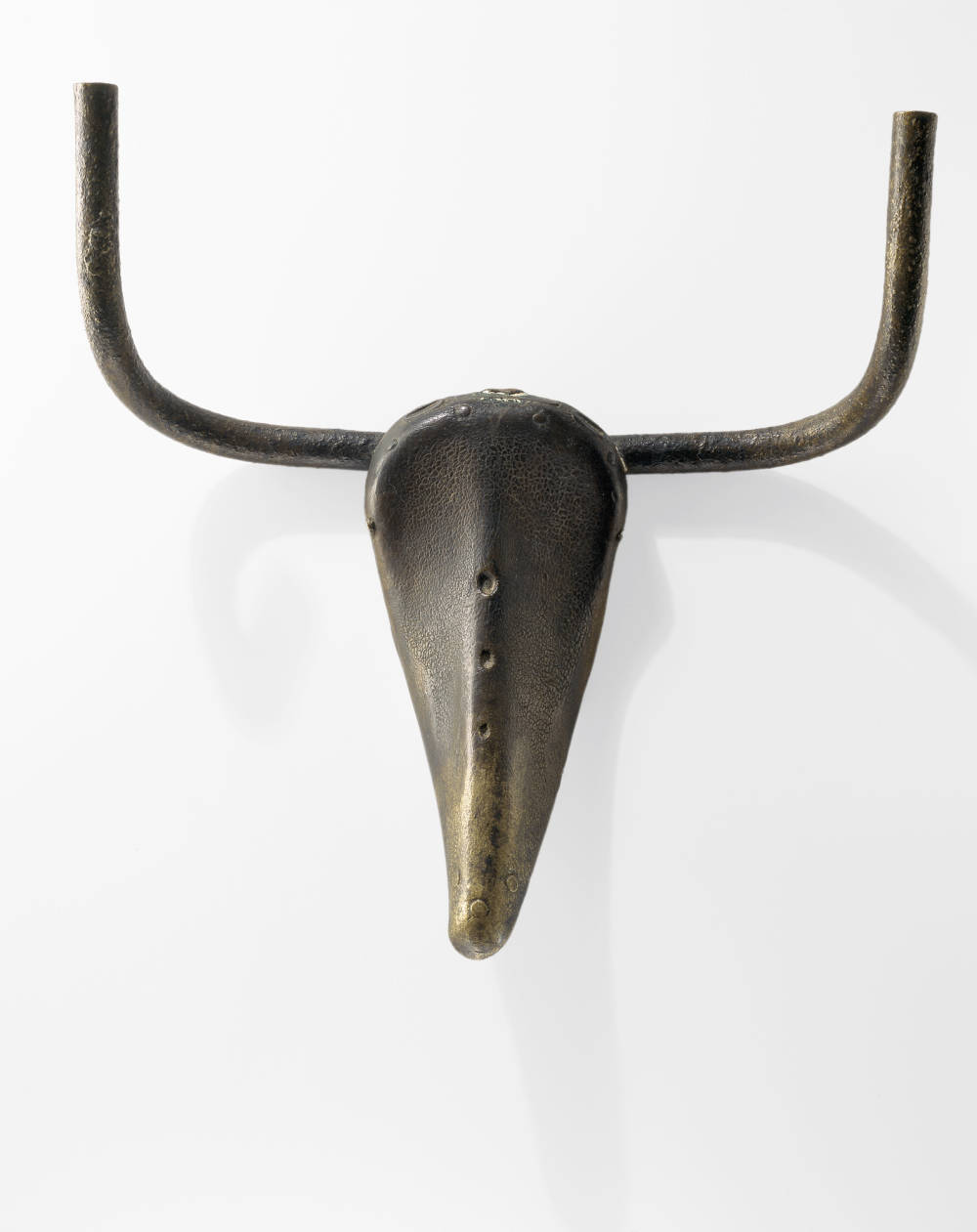
Pablo Picasso
Bull's Head, 1942
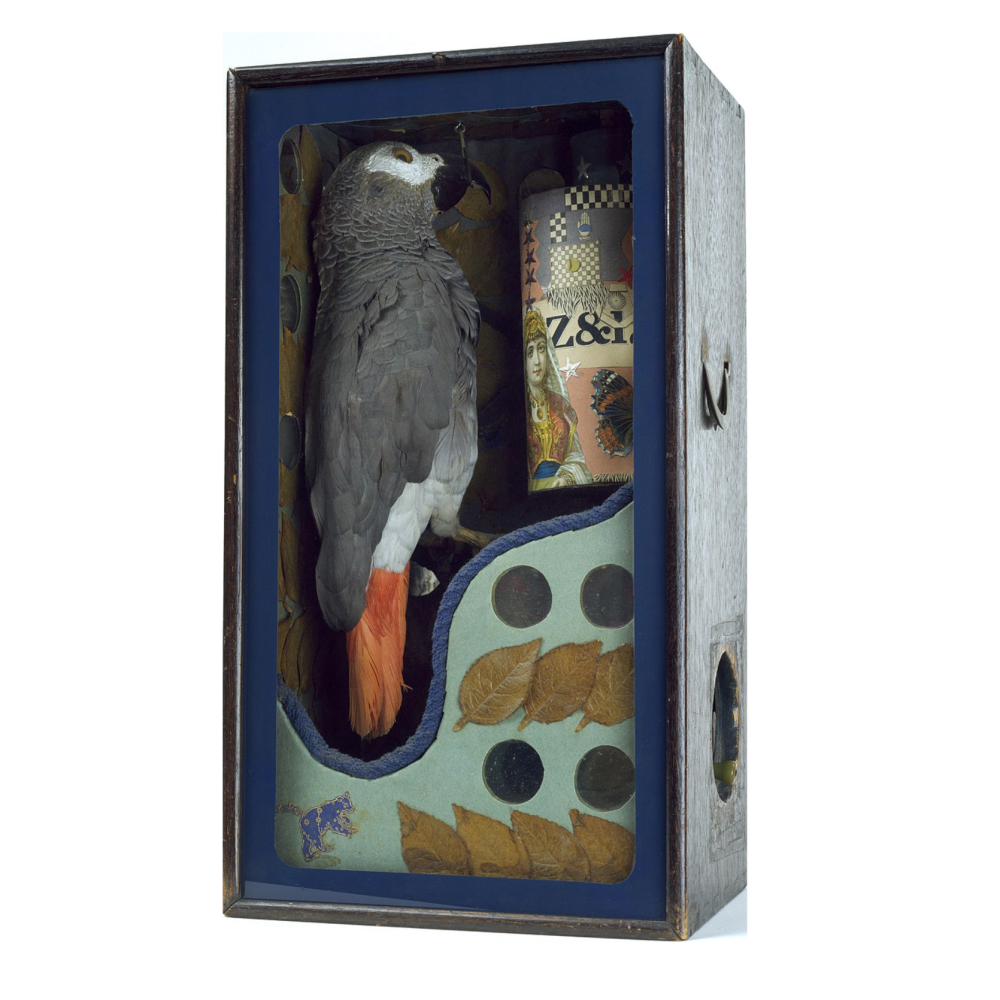
Joseph Cornell
Untitled (Fortune-Telling Parrot for Carmen Miranda), 1939
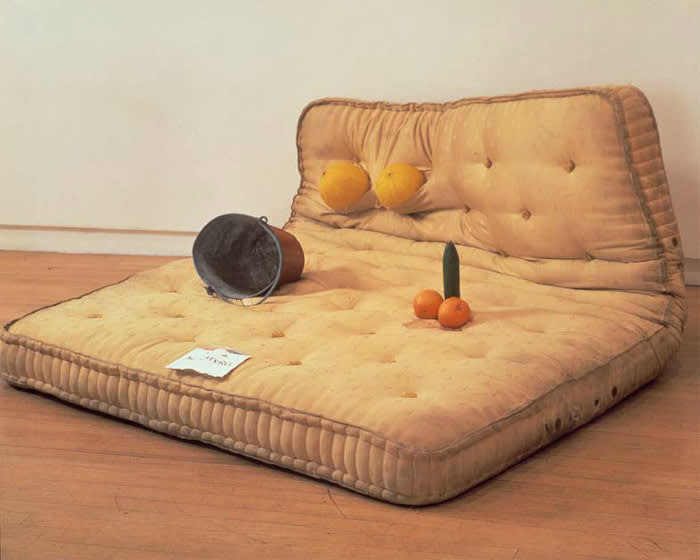
Sarah Lucas
Au Naturel, 1994
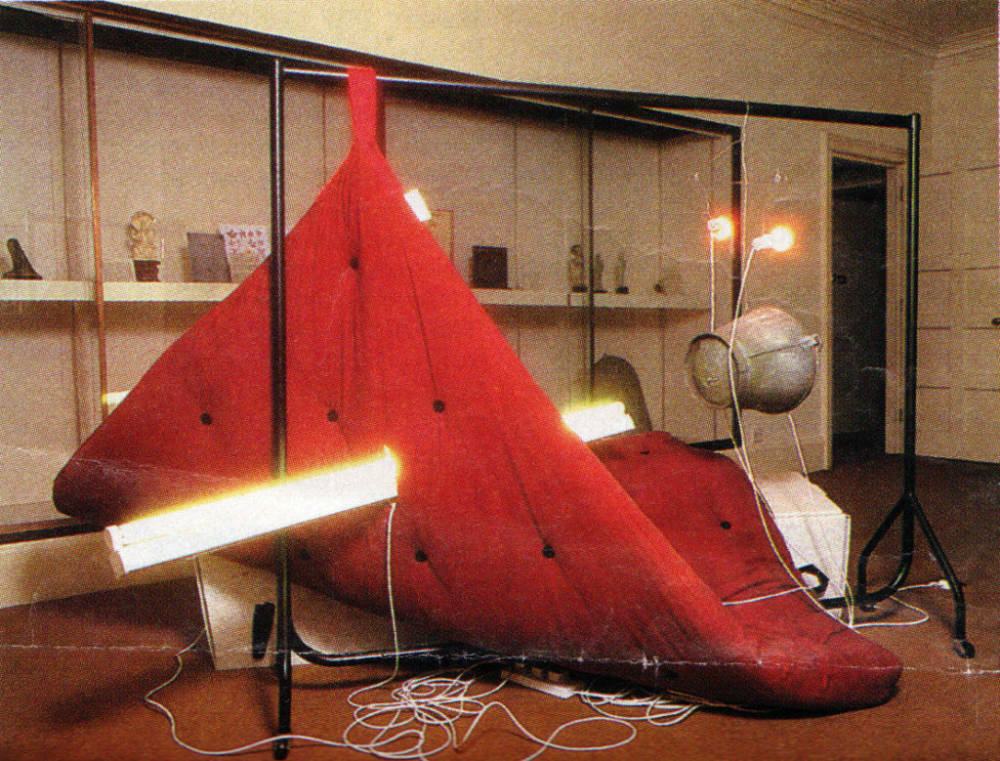
Sarah Lucas
Beyond the Pleasure Principle, 2000

Tracey Emin
My Bed, 1999

Robert Rauschenberg
Coca-Cola Plan, 1958
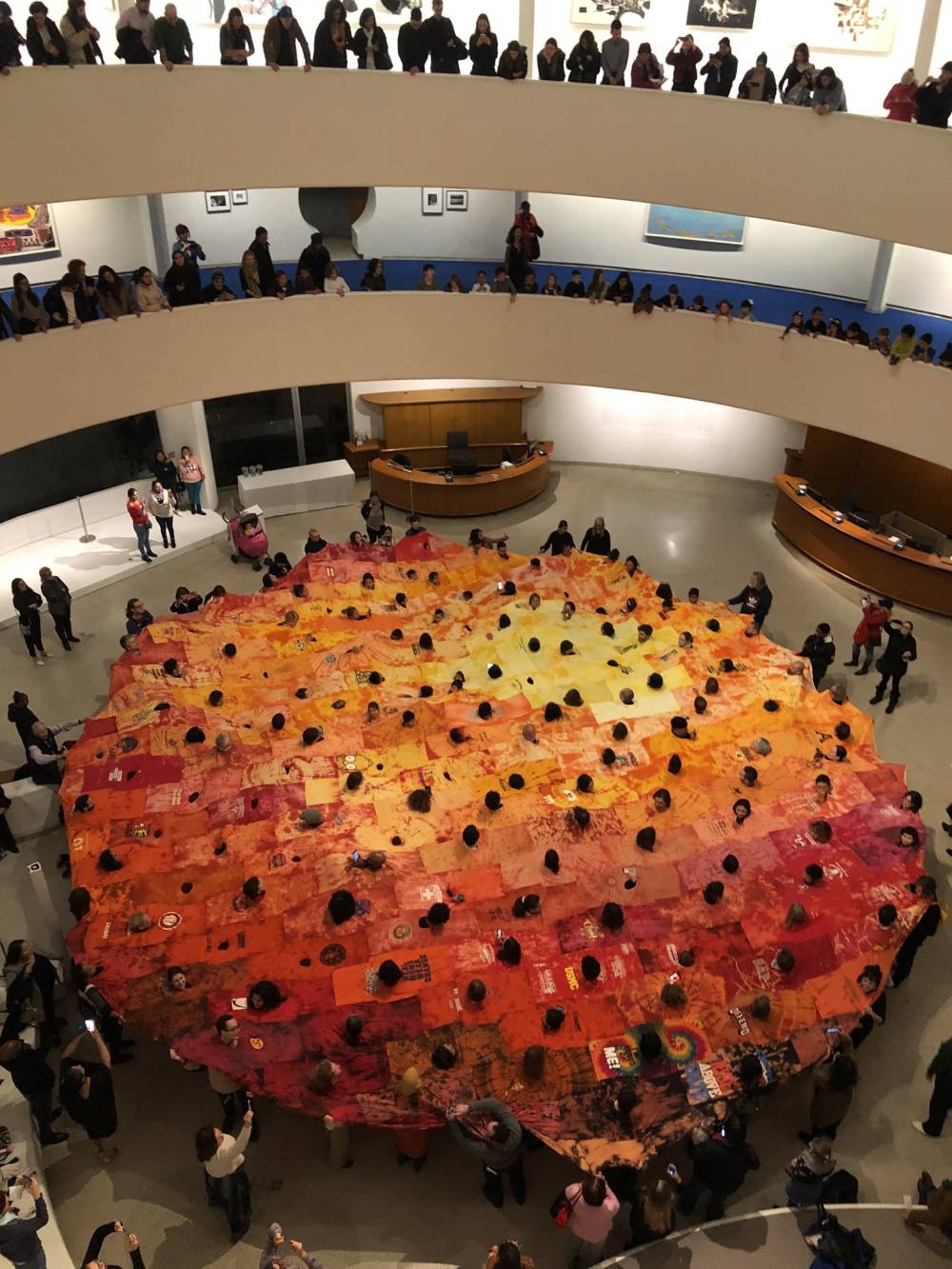
Pia Camil
Here Comes The Sun, 2019
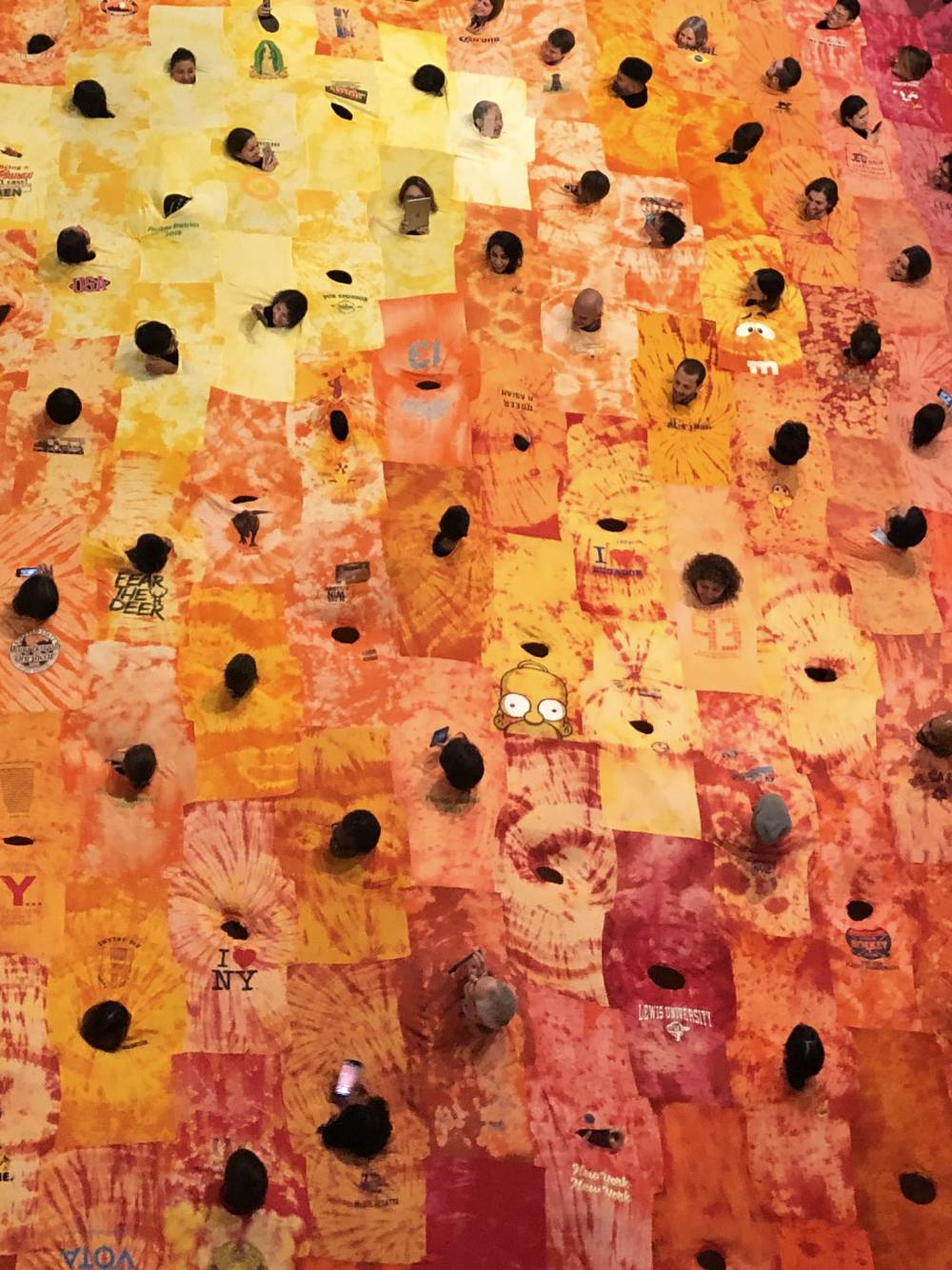
Pia Camil
Here Comes The Sun, 2019

Jean-Michel Basquiat
Pork, 1981
Much like design, architecture also follows a series of principals that equate good design with durability and ability to coexist within its environment. While this doesn’t always lead to design that cuts down on emissions or waste, these core practices are a good roadmap to sustainable design. While not considered an environmentalist, architect Frank Lloyd Wright’s designs follow many of the principles of sustainability. Wright’s meshing of man-made design with naturally created landscapes in works such as the Pennsylvania masterpiece Falling Water center around the desire to coexist with nature. Wright’s largest public project, the Marin County Civic Center in California. Skylight openings allow for the outside to become part of the interior, and the central flattened dome and curves throughout the massive structure echo the hills behind the building, effectively combining the man-made and natural. Frank Lloyd Wright’s innovative approach to design and ability to respect the landscape revolutionized the way architects continue to think about these concepts today.

Frank Lloyd Wright
Falling Water, 1935

Frank Lloyd Wright
Marin County Civic Center, 1957
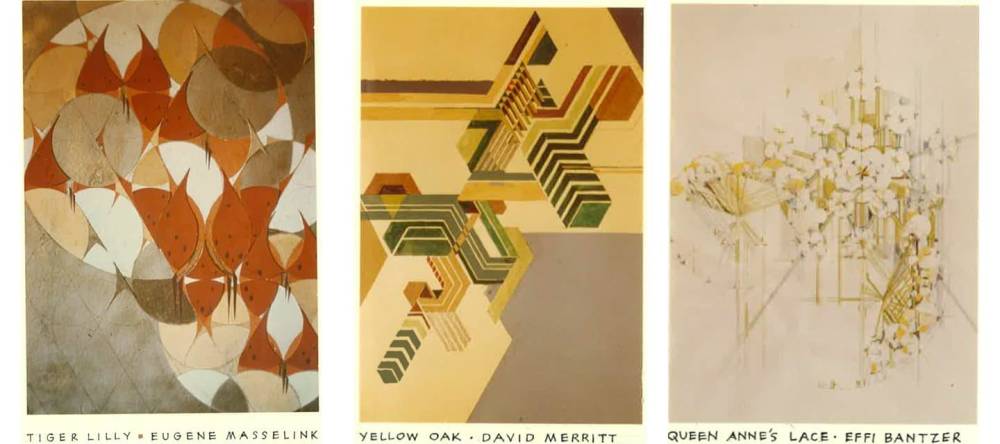
Frank Lloyd Wright
Patterns of Nature, 1960s
Architect Buckminster Fuller’s monumental invention, the Geodesic Dome, sought to move away from the expensive and resource-heavy housing design of the day. Searching for solutions to homelessness, Fuller’s dome is light, strong, and inexpensive, making it a prime example of good design. The design was adopted widely, utilized as military shelters as well as by Disney World’s Epcot Center and the U.S. Pavilion at the 1967 Montreal World’s Fair. Built to withstand extreme elements, suit all terrain types, and be easily assembled and disassembled, the Geodesic Dome is well-suited to sustainable living. Its lack of surface area and dome interior minimize heating and cooling costs and create internal airflow. Fuller’s design was highly influential on eco-friendly design, and the Dome would go on to inspire even more innovative ideas for sustainable living. For example, Fei and Chris Precht’s Farmhouse design uses the Dome’s triangular support system to create a city-friendly vertical farm.
Portrait of Buckminster Fuller
1983
Buckminster Fuller
Worlds Fair, Montreal, 1967
Buckminster Fuller
Geodesic Dome
Fei and Chris Precht
The Farmhouse, 2019
Fei and Chris Precht
The Farmhouse, 2019
Fei and Chris Precht
The Farmhouse, 2019
As with most things, sustainability is a process that we must continue to learn, revise, and restructure as the state of our world changes. By following good design principles, creating innovative uses for our waste, and staying curious, informed and responsible about where our products come from—as well as demanding the same from the companies we support—we can continue to respect ourselves, our fellow citizens, and the world around us.
